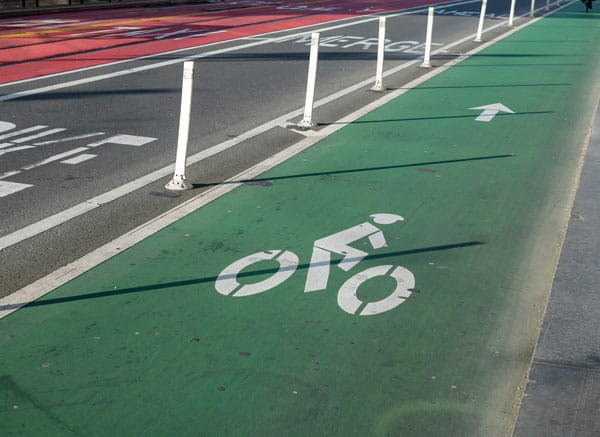
Fatal bicycle crashes in the Seattle area increased 15% from 2017-2021, according to new data.[1] Despite Washington State’s 2019 Target Zero initiative to reduce the number of traffic deaths and serious injuries on our roadways to zero by the year 2030, the trend continues in the wrong direction.[2] As an attorney representing bicycle riders that have been injured, or who have lost their lives while bicycling because of a driver’s negligence, I have had a unique view into this troubling trend.
There are a number of likely reasons why more bicyclists are involved in fatal crashes, including:
- Bicycle use significantly increasing since the COVID-19 pandemic;
- Growing popularity and affordability of electric bicycles, or e-bikes;
- Increasing numbers of new bicycle lanes;
- New bicycle traffic signals at intersections that drivers are not accustomed to;
- An increase in the number of bicycle-sharing services;
- Bicycle-sharing services not providing safety helmets, nor requiring them;
- Local government not requiring bicycle helmets.
Here are some tips you may not be aware of that can make our roads safer for both bicyclists and motorists:
- Bicyclists must use a safety helmet, ideally with MIPS technology (Multi-Directional Impact Protection System). Another helmet safety technology to consider is Shearing Pad Inside, or SPIN. These technologies can help prevent traumatic brain injuries (TBIs);
- Drivers should use the “Dutch Reach”[3] when getting out of vehicles to avoid opening their doors into the path of oncoming bicycle riders. This requires opening a car door from the inside with the hand that’s furthest from the door handle, giving drivers greater visibility;
- Drivers at intersections containing bicycle-lane traffic signals should not simply react and accelerate or turn when the bicycle-only traffic signal turns green. This signal can initially seem like the green motor vehicle traffic signal that drivers automatically respond to;
- Learn how to safely operate an electric bike, including how to master the throttle control. Most e-bike accidents happen when a rider applies too much throttle from a dead stop, or, they apply the throttle with the bike parked, not knowing that the bike is on.
[1] Data: The National Highway Traffic Safety Administration and The League of American Bicyclists.
[2] Target Zero – Washington’s Strategic Highway Safety Plan
[3] The Dutch Influence on Seattle Bicycling – Adler Giersch
